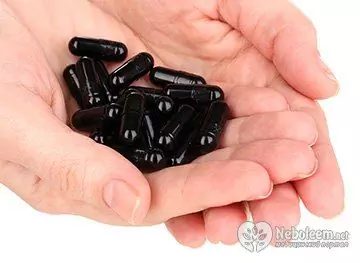- Author Rachel Wainwright [email protected].
- Public 2023-12-15 07:39.
- Last modified 2025-11-02 20:14.
Carbon dioxide

Carbon dioxide (carbon dioxide, carbon dioxide, CO 2) is formed by the interaction of two elements - oxygen and carbon. Carbon dioxide is formed during the combustion of hydrocarbon compounds or coal, as a result of the fermentation of liquids, and also as a product of the breath of animals and humans. It is found in small amounts in the atmosphere. Plants absorb carbon dioxide from the atmosphere and convert it into organic components. With the disappearance of this gas from the atmosphere on Earth, there will be practically no rain and it will become noticeably cooler.
Carbon dioxide properties
Carbon dioxide is heavier than air. It freezes at -78 ° C. When carbon dioxide freezes, it forms snow. In the form of a solution, carbon dioxide forms carbonic acid. Due to some properties, carbon dioxide is sometimes called the “blanket” of the earth. It transmits ultraviolet rays with ease. Infrared rays are emitted from the surface of carbon dioxide into outer space.
Carbon dioxide is released in liquid form at low temperature, in liquid form at high pressure and in gaseous form. The gaseous form of carbon dioxide is obtained from waste gases in the production of alcohols, ammonia, and also as a result of fuel combustion. Gaseous carbon dioxide by properties is a non-toxic and non-explosive gas, odorless and colorless. In liquid form, carbon dioxide is a colorless and odorless liquid. With a content of more than 5%, carbon dioxide accumulates in the floor area in poorly ventilated rooms. A decrease in the volume fraction of oxygen in the air can lead to oxygen deficiency and suffocation. Embryologists have found that human and animal cells need about 7% carbon dioxide, and only 2% oxygen. Carbon dioxide is a tranquilizer of the nervous system and an excellent anesthetic. Gas in the human body is involved in the synthesis of amino acids, has a vasodilating effect. The lack of carbon dioxide in the blood leads to vasospasm and smooth muscles of all organs, to an increase in secretion in the nasal passages, bronchi and to the development of polyps and adenoids, to thickening of membranes due to the deposition of cholesterol.
Obtaining carbon dioxide
There are several ways to obtain carbon dioxide. In industry, carbon dioxide is obtained from dolomite, limestone - decomposition products of natural carbonates, as well as from furnace gases. The gas mixture is washed with a potassium carbonate solution. The mixture absorbs carbon dioxide and is converted to bicarbonate. The bicarbonate solution is heated and, decomposing, releases carbon dioxide. In the industrial production method, carbon dioxide is pumped into cylinders.
In laboratories, the production of carbon dioxide is based on the interaction of hydrocarbons and carbonates with acids.
Applications for carbon dioxide
In everyday practice, carbon dioxide is used quite often. In the food industry, carbon dioxide is used as a baking powder and also as a preservative. It is indicated on the product packaging under the E290 code. The properties of carbon dioxide are also used in the production of carbonated water.

Biochemists have found that it is very effective to fertilize the air with carbon dioxide to increase the productivity of various crops. However, this fertilization method can only be used in greenhouses. In agriculture, gas is used to create artificial rain. By neutralizing the alkaline environment, carbon dioxide replaces the strong mineral acids. In vegetable stores, carbon dioxide is used to create a gaseous environment.
In the perfumery industry, carbon dioxide is used in the manufacture of perfumes. In medicine, carbon dioxide is used for antiseptic effects during open operations.
When cooled, carbon dioxide turns into "dry ice". Liquefied carbon dioxide is packaged in cylinders and sent to consumers. Carbon dioxide in the form of "dry ice" is used to preserve food. When heated, such ice evaporates without residue.
Carbon dioxide is used as an active medium for wire welding. When welding, carbon dioxide is decomposed into oxygen and carbon monoxide. Oxygen interacts with liquid metal and oxidizes it.
In aircraft modeling, carbon dioxide is used as an energy source for engines. Carbon dioxide in cans is used in airguns.
Found a mistake in the text? Select it and press Ctrl + Enter.






